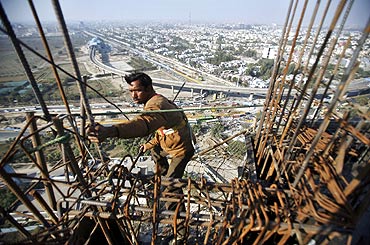
Part I of the series: 'India better prepared than Japan to tackle disasters'
According to the National Institute of Disaster Management, over 90 per cent of our so-called Reinforcement Framed buildings (government and private offices) across India are vulnerable to any kind of natural disaster.
The NIDM, which works under the purview of the ministry of home affairs, reached this conclusion after conducting a survey during which they categorised buildings across India based on the material used to construct them.
Dr Chandan Ghosh, the only civil engineer on the NIDM faculty, told Rediff.com that the number of buildings in India increases by two per cent every year, and the construction process of most of them go unchecked.
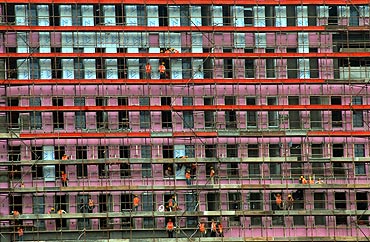
"Based on the 2001 Census, the Technology Building Council categorised the type of buildings in our country -- bricks, concrete, bamboo, etc. Among these, we found that only 2.6 per cent of our building stock is reinforcement-framed. Of these, as many as 90 per cent are vulnerable to damages as they are unauthorised constructions," he adds.
"Of the total number of buildings, 45 per cent are made of bricks without pillars, which are highly vulnerable to earthquake," Dr Ghosh points out.
According to a study conducted by the NIDM, 60 per cent of India's total land area is seismic-prone.
Another startling fact is that the entire Himalayan range is vulnerable to earthquakes that can measure over 8 on the Richter Scale.

"The last earthquake of a magnitude similar to the one that hit Japan -- over 8 on the Richter Scale -- hit India in 1950 on the India-Myanmar border. There is a potential of such an earthquake hitting India again, especially along the 2400 km range of the Himalayan range," adds Dr Ghosh.
Japan was well-prepared for massive earthquakes measuring 7.5 on the Richter Scale. But in India, havoc will be unleashed if such a great earthquake strikes, he warned.
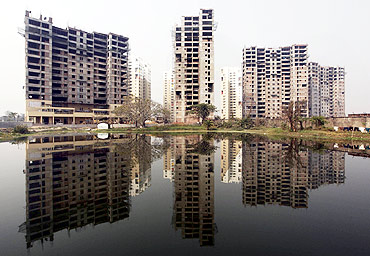
"Even the 6.1 magnitude earthquake in Latur killed 10,000 people. Our resiliency in even such a small magnitude earthquake is fragile. So, when we talk of the construction industry in our country, we have to take this forward in such a way that they are protected from earthquakes," he adds.
"Despite having guidelines and standards, our government could not motivate our building industry to follow them," explains Dr Ghosh.
The infrastructure development in India is such that even the basic set-up of the communications system is flawed, he says.

"In the last 5, 6 years," he says, "many telecommunication towers have been set up (in residential areas in many Indian cities and towns). Important aspects like vulnerability, suitability and their sustenance have been ignored. BSNL has followed some of these guidelines, but private (telecom) operators are completely oblivious to these factors."
"When a disaster occurs," he warns, "communication lines will be completely severed."
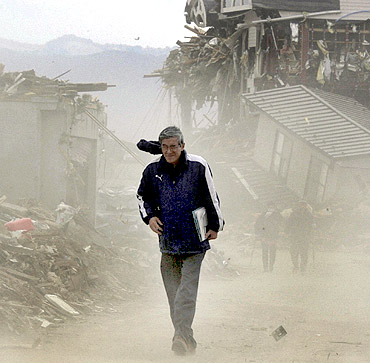
"Typically, our country reacts only after the crisis actually takes place. We have had glaring examples of severed communications. When the cloud burst took place in August last year in Leh, BSNL towers were toppled in the mudflow," he reveals.
"It took over a month-and-a-half for BSNL to re-establish communication. Government offices and helplines went dead. After 7, 8 days, satellite phones were set up to manage a crisis which caused the deaths of over 500 people."

"We have seen that people's awareness levels are minimal. People are not aware of the conditions in which they are living -- they don't know if they are living on land which is vulnerable to earthquakes or flood or fire or any other disaster."
"Sensitising the people and creating awareness should be our primary concern. The other aspect to be taken care of is infrastructure. Almost 90 per cent of our buildings are vulnerable to earthquakes," adds Dr Ghosh. "There are no quality checks and even the masons building our infrastructure do not have the basic training to know earthquake resistance."
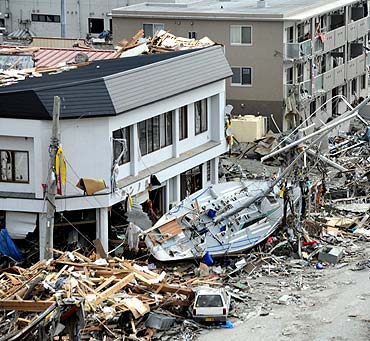
"All ongoing constructions in the country should be checked by a judiciary body. We are adding so many buildings every year. In this way, at least the buildings that are coming up every year will be disaster resistant," he adds.
What is the NIDM doing to ensure India survives a natural disaster?
"We conduct training programmes across the country for all kinds of disasters like floods, earthquakes, tsunami, etc. We visit almost all disaster sites to conduct studies and prepare reports, which are then submitted to the government."
"When a five-storeyed building collapsed late last year in east Delhi because of basement flooding, we took the responsibility of checking buildings for vulnerability in the entire area along with the municipal corporation."